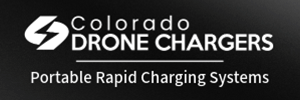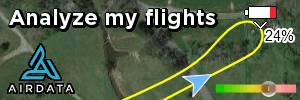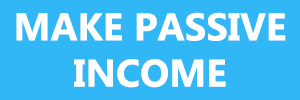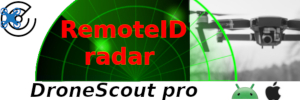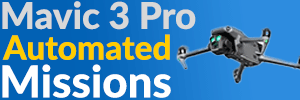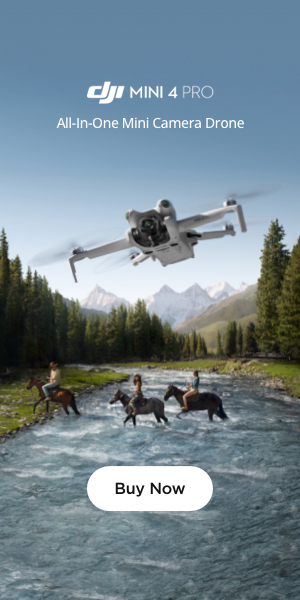I am in the process of getting my FAA part 107 certificate. Is there reciprocity with Canada and does this certification meet Canadian requirements to fly in Canada?
You are using an out of date browser. It may not display this or other websites correctly.
You should upgrade or use an alternative browser.
You should upgrade or use an alternative browser.
Flying in Canada
- Thread starter Paco Bird
- Start date
Fun Flyer
Well-Known Member
Hi Paco. Check out this link. It may provide some insight to your questio.
Many thanks for the tip. I did a check and it appears that there is a lot of similarity in the requirements. I did not see an exemption for recreational flying like in the US, or any reciprocity agreement. I'll probably have to call the CAA if I decide to take my drone up there.Hi Paco. Check out this link. It may provide some insight to your questio.
Wouldn't that be nice?I am in the process of getting my FAA part 107 certificate. Is there reciprocity with Canada and does this certification meet Canadian requirements to fly in Canada?
First the Bad News. Unfortunately the short answer is no, and no.
A slightly longer answer is that it's not entirely impossible, it's just cumbersome and awkward.
In Canada, to operate any "Small Remotely Piloted Aircraft" weighing 250g-25kg, the aircraft must be registered with Transport Canada and the pilot must hold either a Basic or Advanced certificate.
There no longer is any distinction between "recreational" or commercial operations. Differences in the regulatory requirements are based only on the weight of the aircraft and where it's flown. Basic flight operations (roughly similar to FAA's recreational exemptions) are not permitted within any controlled airspace. For that you must hold an Advanced operations certificate (similar to Part 107).
The kicker is, you must be at least 14 years old AND you must be a Canadian citizen or permanent resident.
- See: "Qualifications To Be a Registered Owner of a Remotely Piloted Aircraft" in CARS 901.04
Note also, a while ago Transport Canada was so flooded with SFOC applications, that they altogether ceased processing foreigner applications. I don't know if that's still the case.
To be eligible for a foreigner SFOC application, you must first be "authorized to operate remotely piloted aircraft systems by the foreign state".
- See: CARS 903.01 (c)
The only regulation that applies to sub-250gram micro-RPAS is:
- CARS 900.06 - "No person shall operate a remotely piloted aircraft system in such a reckless or negligent manner as to endanger or be likely to endanger aviation safety or the safety of any person."
There still are a few other restrictions that do apply. Don does a great job of explaining those details in this video:
Wouldn't that be nice?
First the Bad News. Unfortunately the short answer is no, and no.
A slightly longer answer is that it's not entirely impossible, it's just cumbersome and awkward.
In Canada, to operate any "Small Remotely Piloted Aircraft" weighing 250g-25kg, the aircraft must be registered with Transport Canada and the pilot must hold either a Basic or Advanced certificate.
There no longer is any distinction between "recreational" or commercial operations. Differences in the regulatory requirements are based only on the weight of the aircraft and where it's flown. Basic flight operations (roughly similar to FAA's recreational exemptions) are not permitted within any controlled airspace. For that you must hold an Advanced operations certificate (similar to Part 107).
The kicker is, you must be at least 14 years old AND you must be a Canadian citizen or permanent resident.
Foreigners can apply for a Special Flight Operations Certificate (SFOC) by checking the "Foreign Operator or Pilot" box on this SFOC application form. Note the application must be submitted at least a month beforehand!
- See: "Qualifications To Be a Registered Owner of a Remotely Piloted Aircraft" in CARS 901.04
Note also, a while ago Transport Canada was so flooded with SFOC applications, that they altogether ceased processing foreigner applications. I don't know if that's still the case.
To be eligible for a foreigner SFOC application, you must first be "authorized to operate remotely piloted aircraft systems by the foreign state".
But wait, there actually is some Good News.
- See: CARS 903.01 (c)
The only regulation that applies to sub-250gram micro-RPAS is:
No registration required, no Basic or Advanced certificate required, nor even any prohibitions against foreign pilots. If you fly a sub-250g Mavic Mini, none of that stuff applies. Only 900.06.
- CARS 900.06 - "No person shall operate a remotely piloted aircraft system in such a reckless or negligent manner as to endanger or be likely to endanger aviation safety or the safety of any person."
There still are a few other restrictions that do apply. Don does a great job of explaining those details in this video:
I don't think you are correct, I found this guy with Mavic 3 on youtube flying all over toronto and CN Tower, somebody asked him what do you need to fly, he said noting exept "One thing you need to do is sending the request via DJI fly safe website."
Jagerbomb52
Well-Known Member
All the information given by @Zbip57 is perfectly correct and very detailed. The person you referenced with that video has no cue on the rules and he broke many. If reported and he is caught he will have a very large fine. Every inch of where he was flying is a NFZ for Basic operations which he was flying under. DJI unlock does not make it right.I don't think you are correct, I found this guy with Mavic 3 on youtube flying all over toronto and CN Tower, somebody asked him what do you need to fly, he said noting exept "One thing you need to do is sending the request via DJI fly safe website."
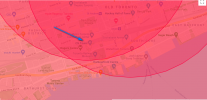
I don't think you are correct, I found this guy [...] he said ...
Check the regulations for yourself using the links I provided.
Don't trust everything you see on the internet.
Check the regulations for yourself using the links I provided.
great you are right, no need to call me a clown tho.
Ha!no need to call me a clown tho.
Sorry. That's was more directed at the many clowns on the internet who are definitely not to be trusted. Always do your own research.
In a way, he was correct though. The only thing physically preventing you from flying in downtown Toronto is the DJI geofencing. That can be unlocked, after which you won't be stopped from flying.
But you still can't do it legally without jumping through several more onerous legal hoops, which currently are especially restrictive for foreign visitors to Canada unless you're flying sub-250gram.
This is a very helpful thread, thanks to @Zbip57 and others who contributed. I do have a question...
I'm from the US, have my Part 107 (and longtime manned airplane pilot and owner) - so I'm quite familiar with US airspace and regs, and somewhat familiar with Canadian airspace and regs at least for for crewed aircraft. This is my first potential foray into flying a drone in Canada.
I'm thinking about a visit up to BC (lower mainland, east of Abbotsford) and would be bringing my Mini 3 Pro - and definitely keeping it under 250 grams -- so as I read the regs above, I should be free to fly in most places away from airports, etc. (keeping in mind the always-present "basic" requirements not to be A Complete Idiot). So far, so good.
My question is about "Class F Advisory airspace." Looking on the NavCanada drone-tool website, it depicts this airspace in Yellow (it's CYA187) between the various bits of Abbotsford airspace marked in red, and the red circle around Chilliwack). I'm assuming this "Class F Advisory" airspace is exactly that -- advisory -- and is not Prohibited or Restricted in any other ways (other than the general catch-all requirements to not "do anything stupid", give way and stay clear of manned aircraft, etc., and other general rules for sub-250 gram drones). Correct? So yellow airspace designation just means be extra cautious, it doesn't mean the airspace is restricted or prohibited. Righteo?
Thanks.
I'm from the US, have my Part 107 (and longtime manned airplane pilot and owner) - so I'm quite familiar with US airspace and regs, and somewhat familiar with Canadian airspace and regs at least for for crewed aircraft. This is my first potential foray into flying a drone in Canada.
I'm thinking about a visit up to BC (lower mainland, east of Abbotsford) and would be bringing my Mini 3 Pro - and definitely keeping it under 250 grams -- so as I read the regs above, I should be free to fly in most places away from airports, etc. (keeping in mind the always-present "basic" requirements not to be A Complete Idiot). So far, so good.
My question is about "Class F Advisory airspace." Looking on the NavCanada drone-tool website, it depicts this airspace in Yellow (it's CYA187) between the various bits of Abbotsford airspace marked in red, and the red circle around Chilliwack). I'm assuming this "Class F Advisory" airspace is exactly that -- advisory -- and is not Prohibited or Restricted in any other ways (other than the general catch-all requirements to not "do anything stupid", give way and stay clear of manned aircraft, etc., and other general rules for sub-250 gram drones). Correct? So yellow airspace designation just means be extra cautious, it doesn't mean the airspace is restricted or prohibited. Righteo?
Thanks.
Fun Flyer
Well-Known Member
You may want to check out “Don drones on” on YouTube. He has lots of excellent information on Canadian drone laws. That may help answer some of your questions.
Have fun on your up coming vacation in Canada.
Have fun on your up coming vacation in Canada.
Correcteo. CYA is advisory, as opposed to CYR restricted.My question is about "Class F Advisory airspace." Looking on the NavCanada drone-tool website, it depicts this airspace in Yellow (it's CYA187) between the various bits of Abbotsford airspace marked in red, and the red circle around Chilliwack). I'm assuming this "Class F Advisory" airspace is exactly that -- advisory -- and is not Prohibited or Restricted in any other ways (other than the general catch-all requirements to not "do anything stupid", give way and stay clear of manned aircraft, etc., and other general rules for sub-250 gram drones). Correct? So yellow airspace designation just means be extra cautious, it doesn't mean the airspace is restricted or prohibited. Righteo?
If you click on that zone it pops up more information. Advisory zones are used, for example, in zones used for parachuting or hang-gliding where there are things to watch out for during certain times of day.
There no longer is any distinction between "recreational" or commercial operations.
Well...
Transport Canada recently published for comments, a proposed amendment to our regulations allowing BVLOS flight under certain conditions. The proposed changes reintroduce wording specifically relating to commercial operations for RPAS weighing 250 grams or more.
canadagazette.gc.ca/rp-pr/p1/2023/2023-06-24/html/reg6-eng.html
Don gives a good summary:
Robert Prior
Well-Known Member
Yeah, he's an idiot. (Which may be why that video is no longer available?)I found this guy with Mavic 3 on youtube flying all over toronto and CN Tower, somebody asked him what do you need to fly, he said noting exept "One thing you need to do is sending the request via DJI fly safe website."
That area is within controlled airspace and within range of two heliports, so no Basic operations and Advanced operations require advance permission.
Robert Prior
Well-Known Member
We don't have a distinction between recreational and commercial flying: all it depends on if the mass of the drone and location of the flight.I did not see an exemption for recreational flying like in the US, or any reciprocity agreement. I'll probably have to call the CAA if I decide to take my drone up there.
There is no reciprocity agreement.
CAA? Canadian Automobile Association? Up here drones are controlled by Transport Canada. If your drone is under 250g you're good to go, if over you will need not only a Canadian license but also a Special Flight Operations Certificate (unless you're a citizen or permanent resident).
Thanks, that's what I figured, just wanted to get confirmation.Correcteo. CYA is advisory, as opposed to CYR restricted.
If you click on that zone it pops up more information. Advisory zones are used, for example, in zones used for parachuting or hang-gliding where there are things to watch out for during certain times of day.
So that raises a second question, about this specific block of airspace CYA 187 (but also maybe applies elsewhere). On the NavCanada "Where To Fly" map online, when I click that airspace, it pops up a convenient info dialog; clicking on the "Details" button the dialog expands to reveal more info just as I'd expect. At the bottom of that dialog, it contains the following text:
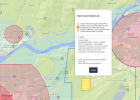
Note the very last line shown: Valid 2023/02/23 to 2023/04/20.
Checking my calendar, it appears that this airspace designation was valid from late February to late April 2023. Which I would interpret as...it has expired (as of April 21). So why is it still shown here? It's certainly not a big deal, and I would of course exercise caution there anyway, but it makes me wonder how "current" this online tool is, how often it's updated, and by extension...what other airspace changes it might NOT be depicting (especially restrictions).
FWIW, I followed the link to the online version of the Designated Airspace Handbook ("DAH"), and I note (looking carefully) that has an effective date of 20 April to 15 June, so still-current info. This suggests to me that either the online graphical/map version of their data is not updated as frequently as the text-based DAH version (looks like the update cycle for that is about every 60 days), or the lack of an update for this specific airspace block (I did not check others) was simply an error. Or maybe there's a strike at NavCanada. In any case, the CYA187 airspace is still listed in the current online DAH, so I'll assume it's still in effect (probably is a "permanent temporary" designation). Just an unexpected discrepancy between the two different sources.
So...notwithstanding my first-use observations, is the NavCanada "Where To Fly" map online considered an authoritative (trustworthy, and legally adequate) source? I would expect so, and that if you check it before every flight, you can rely on its accuracy (other than in the case of a last-minute popup TFR).
Does the map generally show TFRs (fire, emergency, VIP) in near real-time, or is it more of a static document only updated periodically (eg every 60 days)? If not, I assume there is a better, more up-to-date source for real-time Canadian airspace TFR info...can you point me to one?
By the way, I do love the airspace designation – CYA. Down here in the states that acronym means something else entirely...
Thanks.
Similar threads
- Replies
- 5
- Views
- 5K
- Replies
- 6
- Views
- 634
- Replies
- 5
- Views
- 649
DJI Drone Deals
New Threads
-
-
2 Genuine DJI Mini 4 Pro, Mini 3 Series Plus Intelligent Flight Battery
- Started by Dogpilot
- Replies: 0
-
-
Mini 4 Pro Istanbul where the East meets West - Eminönü
- Started by MPone
- Replies: 1
-
Wanting to understand "Power Banks" and what I'll need....
- Started by MavicFlyer2
- Replies: 7





